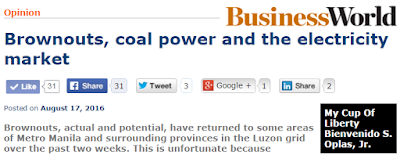Top 10 myths for oil tax hike

* My column in BusinessWorld last January 17, 2017. An excise tax is defined by the Department of Finance (DoF) as “a tax on products that have a negative effect on health or the environment... on nonessentials and luxury items.” With this definition, the DoF therefore, should abolish the tax on oil products, not increase it. Here also are the 10 myths and alibi why the DoF and other sectors tend to demonize oil and are proposing oil tax to be as high as possible. MYTH 1 OIL IS BAD FOR THE ENVIRONMENT. Truth: Transportation of people and goods via cars, jeepneys, buses, and trucks that use oil is good for the environment because there will be no need for millions of cows, carabaos, or horses that produce tons of animal manure on the roads daily. Sure, there are particulates and other polluting gases but they are minor compared to tons of animal manure everywhere, more dirt, flies and worms in the environment. Also, cheaper LPG will encourage poor households to stop using fir...










